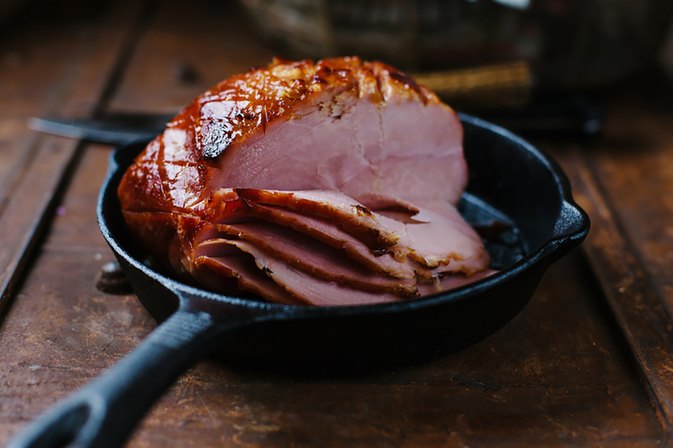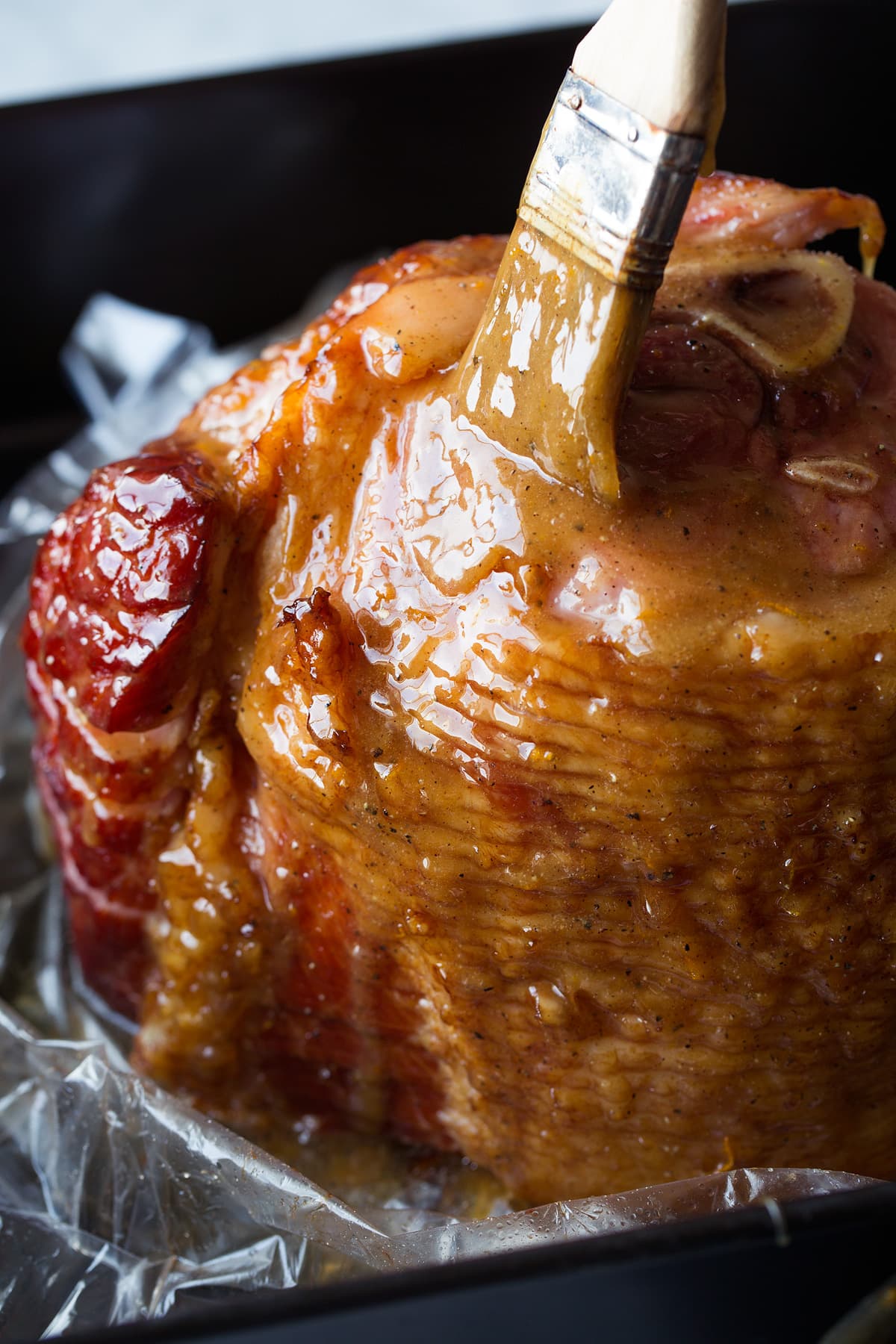
For a whole ham, allow 15 to 18 minutes to the pound for a half, 18 to 24 minutes per pound. To heat the ham, place it on a rack in a shallow roasting pan, and bake uncovered. Wrap the ham tightly with the foil and bake at 300 F for about 15 minutes per pound, or until a meat thermometer registers 140 F when inserted into the thickest part of the meat, not touching bone. To heat a spiral-sliced ham, place it on a sheet of heavy-duty foil, cut-side down. (Place whole ham on its side.) Cover tightly with lid, foil or place in cooking bag and heat at 275☏ for approximately 12-15 minutes per pound. Remove all packaging materials and place ham face down directly into baking dish or roasting pan. Allow the ham to rest for 10 minutes before slicing. This will take about 15 to 18 minutes per pound for pre-cooked hams, while hams that must be cooked before eating require about 18 to 20 minutes per pound.

Maple and bourbon are also popular flavorings.
#Baking a spiral sliced ham free
If you're making your own glaze, feel free to take the flavor profile in just about any direction, although traditionally most glazes are made with a combination of brown sugar, honey, mustard, fruit juice, and spices like clove or cayenne pepper. Everyone loves to advise you to throw the packet away, but we'll leave that decision up to you (to be certain, there's nothing especially wrong with the glaze packet). Many spiral hams will come with a little packet of glaze. In a Crockpot set to low, an 8- to 10-pound ham will warm through in 4 or 5 hours, depending on the ham's initial temperature. You can use a Crockpot instead of an oven to heat your ham, provided, of course, the Crockpot is spacious enough. For a large ham, this can take several hours, so plan accordingly. When it hits 135☏ or so, pull it out, and it will continue cooking to reach the recommended 140☏. Don't worry so much about the time, and just check the ham's internal temperature periodically with the meat thermometer. The X is usually somewhere between 10 and 20, while the Y is generally 250☏ to 300☏. Many ham preparation guides will tell you to heat your ham for X minutes per pound at Y temperature. As long as you use a thermometer and don't set your oven too high, your ham will reach serving temperature without drying out. Some folks like to add liquid or lemon slices to the bottom of the pan, but this isn't necessary. If you don't have foil, you can use a cooking bag, or even a large oven-safe pot with a lid set ajar.

Loosely wrap the ham with foil, set it in a roasting pan, and you'll have everything you need to keep your ham nice and moist. Foil is the easiest vapor barrier to apply, and it's foolproof. You don't want to miss Juicytown and end up in Jerkyville. But being able to measure your target is the best way to avoid overshooting it. The most important tool to help you properly heat a spiral ham isn't an oven-it's a thermometer. You don't want to dry out the surface in the process however, and heating too aggressively will rob the ham of its succulence (to the point where neither a maple syrup glaze nor mustard could improve the situation). Since it's a large piece of meat, warming should go low and slow because it takes time for heat to penetrate all the way to the bone. Your ham is already cooked, so it only needs to be brought to a suitable serving temperature, which is about 140☏.


 0 kommentar(er)
0 kommentar(er)
